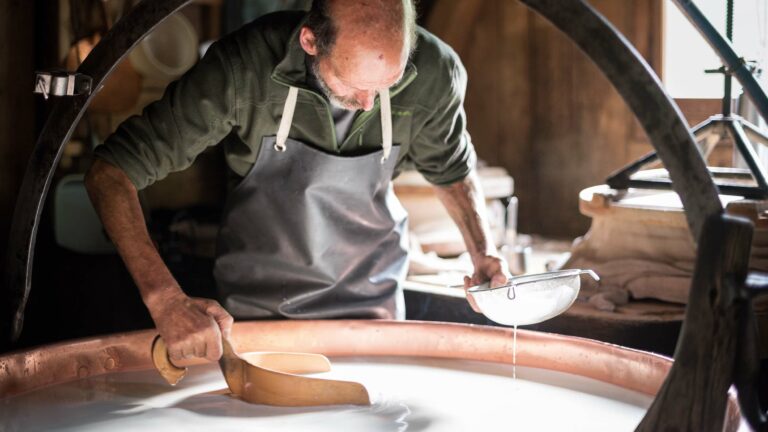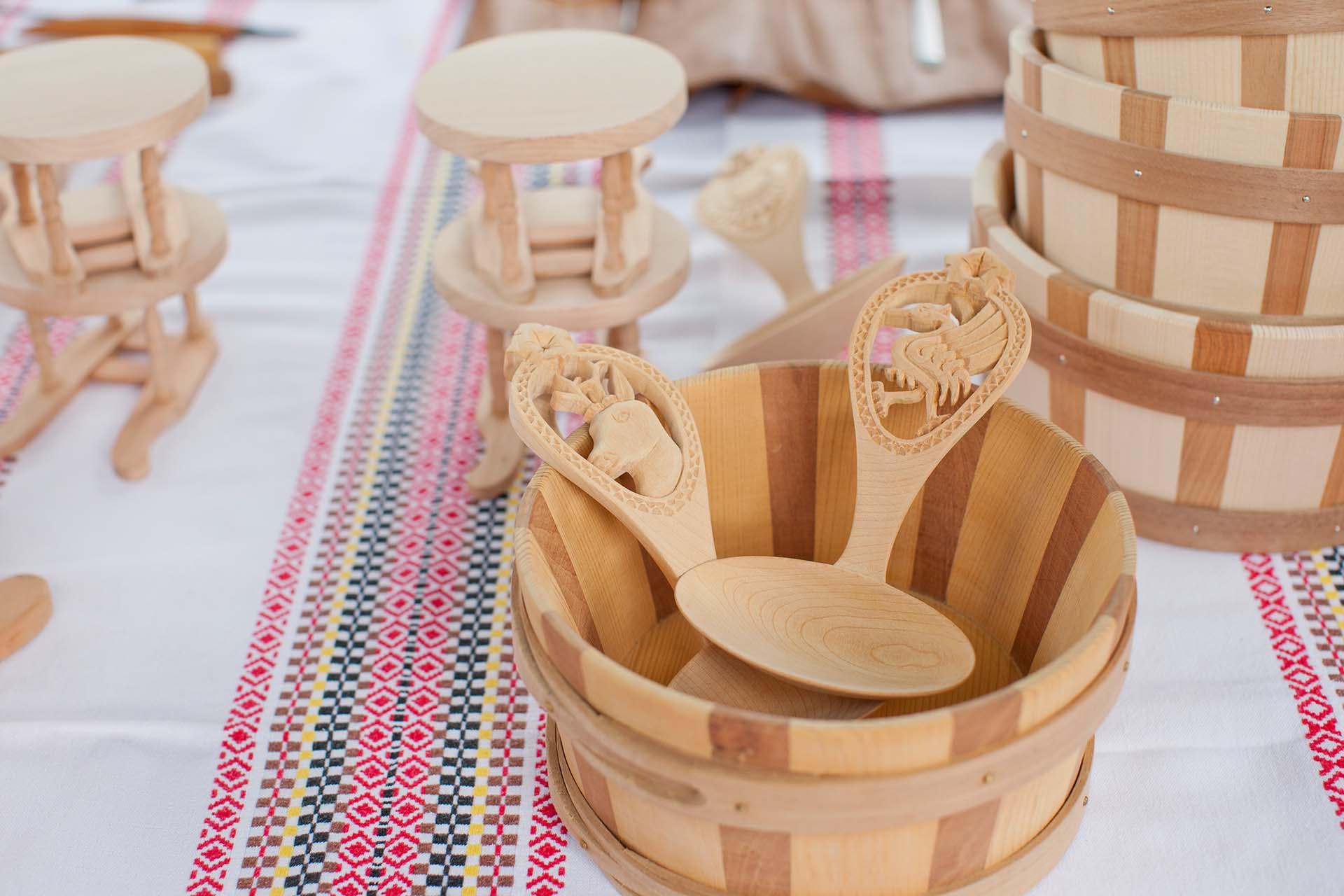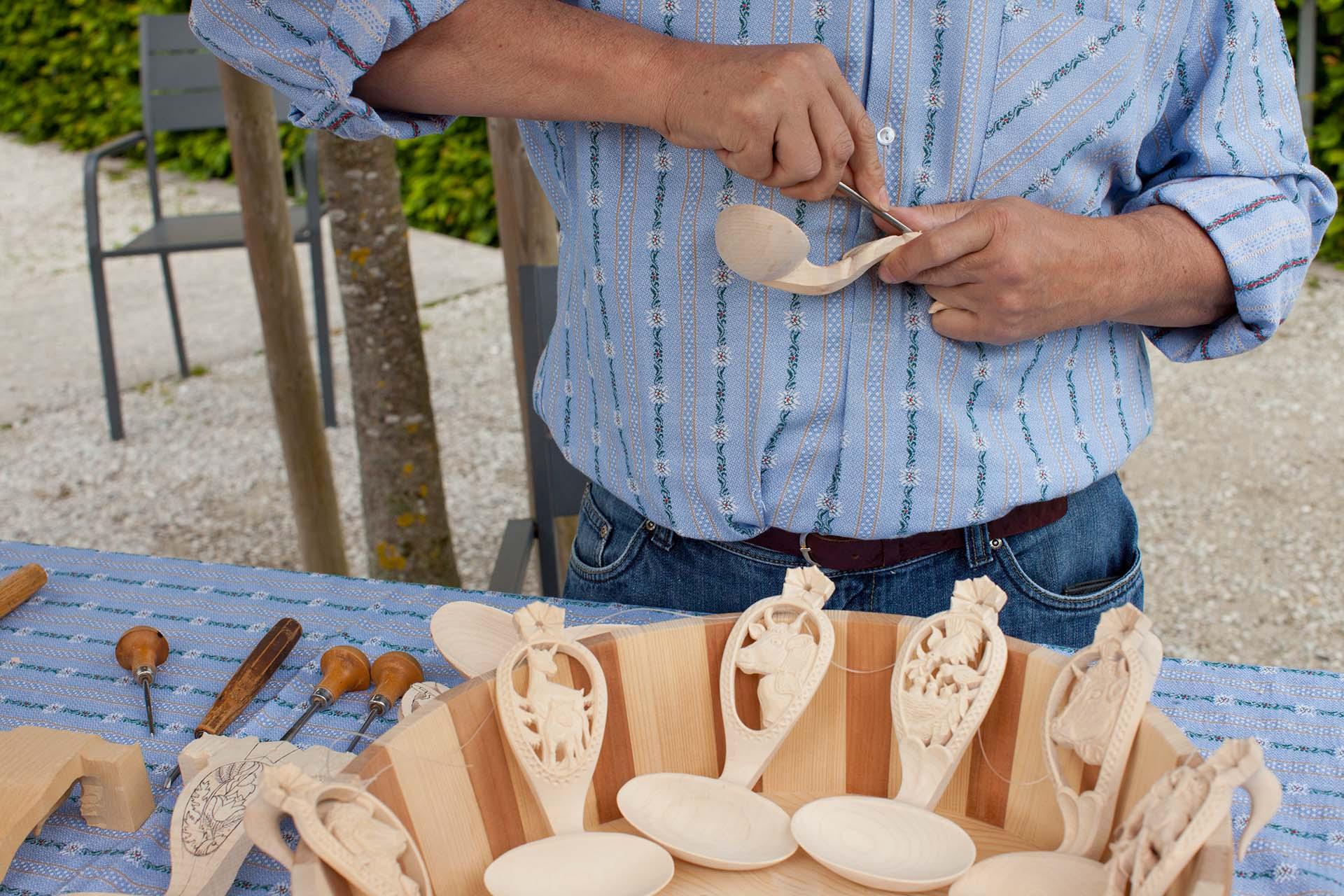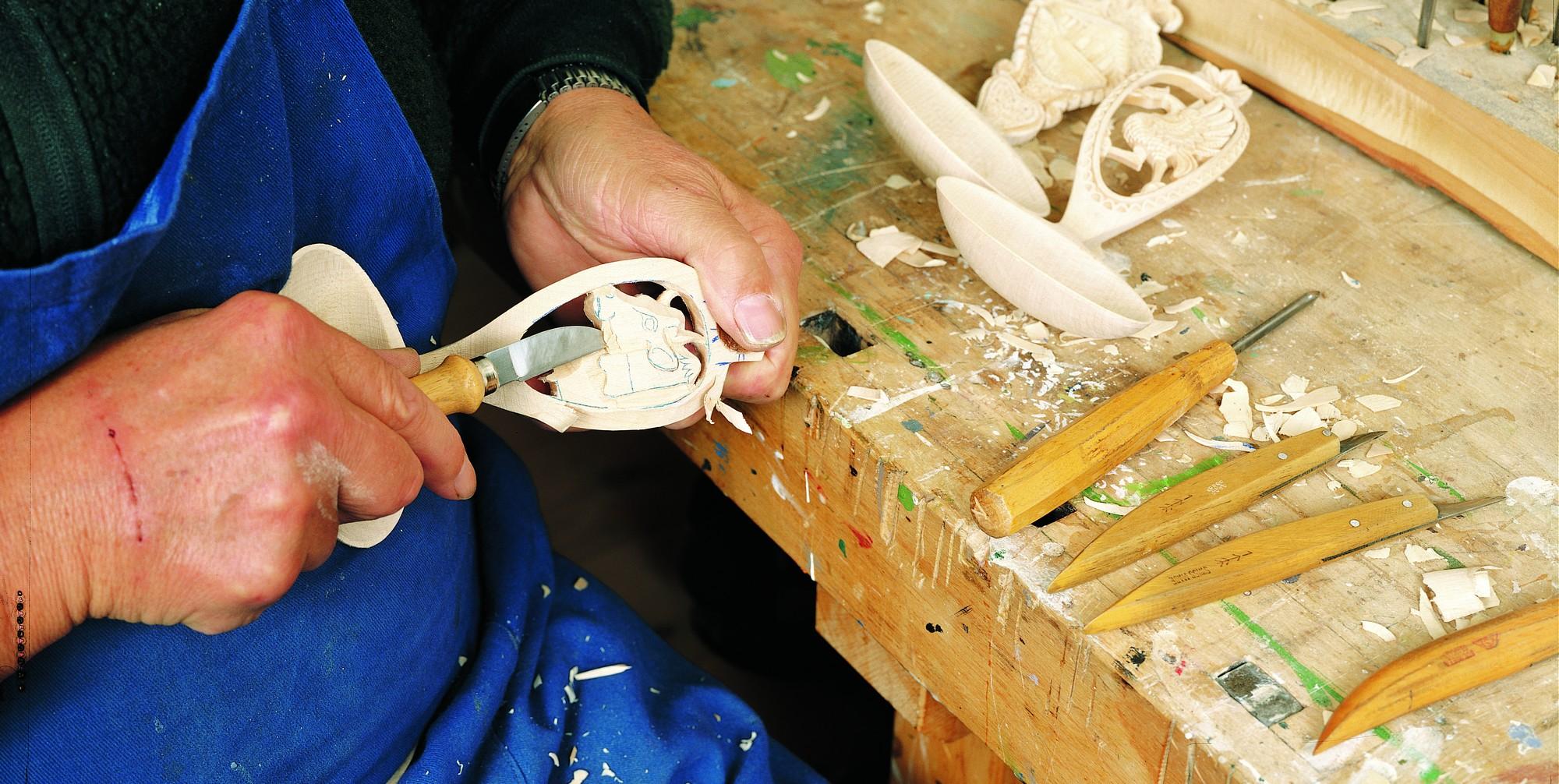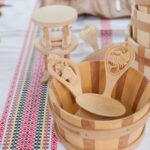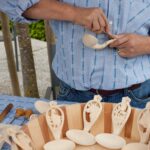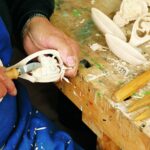If today the cream spoon is often used only for decorative purposes, that's its practical aspect that used to prevail. Indeed, its very form is the result of the use to which it was put: a flat handle so that you could hold it firmly, especially for the heavy double cream.
These spoons go back to the early years of life in the mountain chalets. The shape has remained the same, but the handle was once pretty basic. Carved spoons first appeared at the end of the seventeenth century. As for the specificity of the Gruyère spoon, the openwork spoon, very finely worked with a lacy pattern, it first made its appearance at the beginning of the twentieth century, thanks to two wood carvers, Etienne Geinoz and Emile Pasquier. The spoon is frequently carved from a block of maple (which leaves no taste) measuring 18 x 12,5 cm. First, the block is hewn out using a band saw, then hollowed out with an instrument a bit like scissors before being sanded down and carved out with a knife. If necessary, the spoons are dyed with milk coffee. What's really essential is that no two must be identical, even if they have the same basic pattern!
La Gruyère Tourisme
Centre commercial Velâdzo (rez inférieur)
Place de la Gare 3
1630 Bulle







